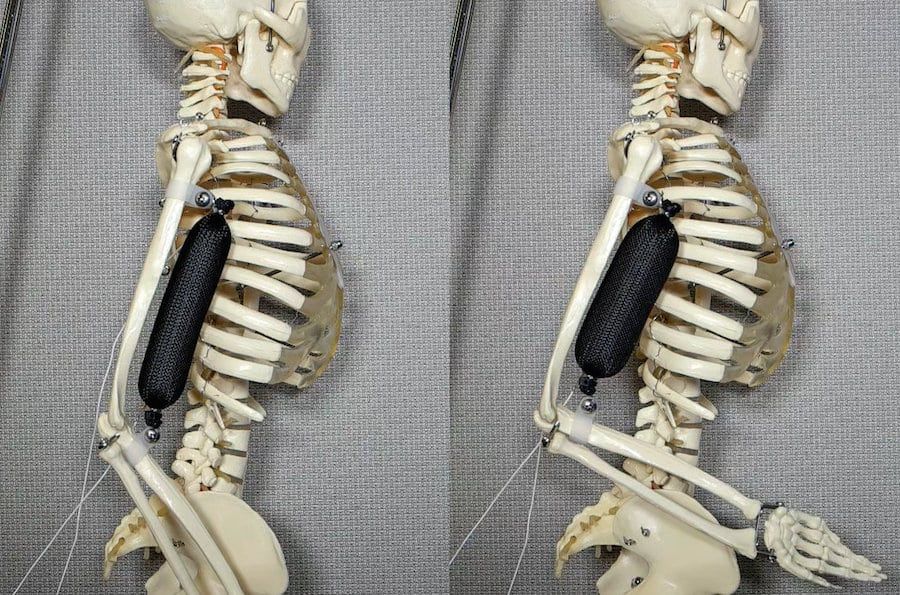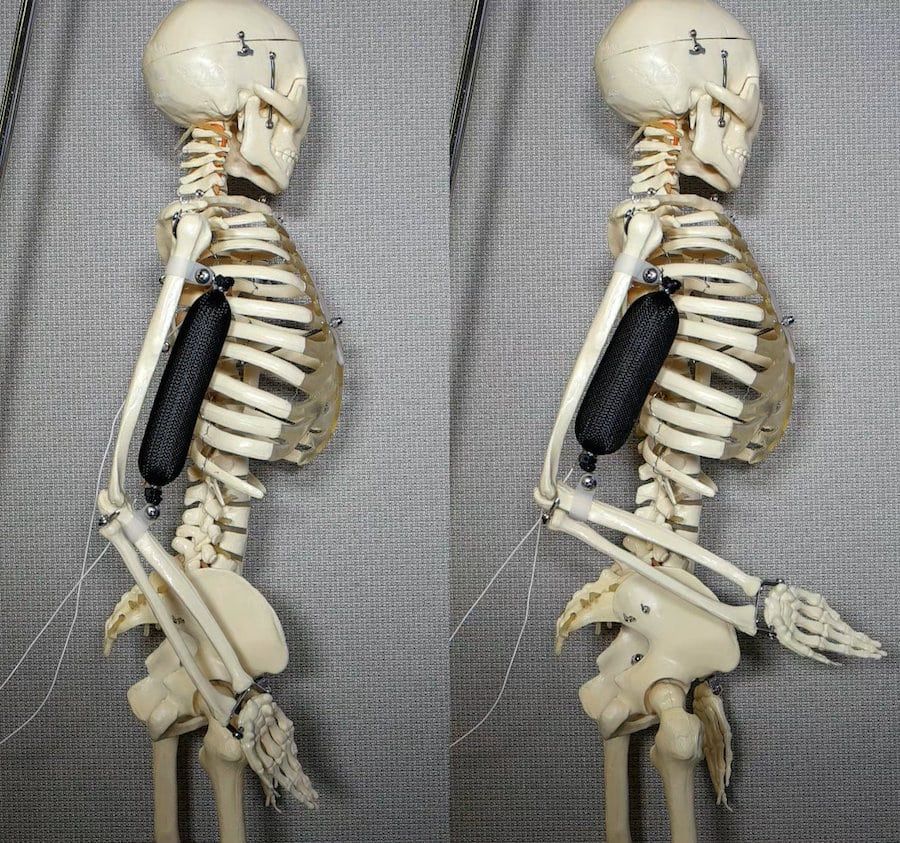Humanoid robots are a ‘strong’ step closer after engineers developed synthetic muscle that can lift a thousand times its own weight.
The 3D-printable synthetic soft muscle, which doesn’t need an external compressor or high voltage equipment as previous attempts required, also has a strain density – expansion per gram – FIFTEEN times larger than natural muscle.
And the artificial muscle can push, pull, bend and twist – as well as lift weight.
Up until now no material has been capable of functioning as a soft muscle due to an inability to show the desired properties of high actuation stress and high strain, according to the engineering team at Columbia University in the United States.

Team leader Professor Hod Lipson said: “We’ve been making great strides toward making robots minds, but robot bodies are still primitive.
“This is a big piece of the puzzle and, like biology, the new actuator can be shaped and reshaped a thousand ways.
“We’ve overcome one of the final barriers to making lifelike robots.”
Inspired by living organisms, Prof Lipson said soft material robotics hold “great promise” for areas where robots need to contact and interact with humans, such as manufacturing and healthcare.
He said that , unlike rigid robots, soft robots can replicate natural motion – grasping and manipulation – to provide medical and other types of assistance, perform delicate tasks, or pick up soft objects.

To achieve an actuator with high strain and high stress coupled with low density, study lead author Aslan Miriyev, a postdoctoral researcher in the Creative Machines lab, used a silicone rubber matrix with ethanol distributed throughout in micro-bubbles.
The solution combined the elastic properties and extreme volume change attributes of other material systems while also being easy to fabricate, low cost, and made of environmentally safe materials.
After being 3D-printed into the desired shape, the artificial muscle was electrically actuated using a thin resistive wire and low-power (8V).
It was tested in a range of robotic applications where it showed “significant” expansion-contraction ability, being capable of expansion up to 900 per cent when electrically heated to 80C.
Via computer controls, the autonomous unit is capable of performing motion tasks in almost any design, according to Dr Miriyev.

He added: “Our soft functional material may serve as robust soft muscle, possibly revolutionising the way that soft robotic solutions are engineered today.
“It can push, pull, bend, twist, and lift weight. It’s the closest artificial material equivalent we have to a natural muscle.”
The research team, whose findings were published by the journal Nature Communications, plan to continue building on the development, incorporating conductive materials to replace the embedded wire, accelerating the muscle’s response time and increasing its shelf life.
Dr Miriyev said that, long-term, they will involve artificial intelligence to learn to control the muscle, which may be a “last milestone” towards replicating natural motion.
https://www.thelondoneconomic.com/news/scientists-track-brain-skull-shape-dinosaurs-birds/11/09/
https://www.thelondoneconomic.com/news/snakes-lose-stripes-nearer-live-man-pollution/10/08/

